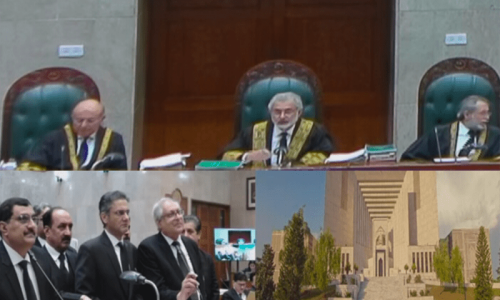In the first-ever, one-on-one interview by any US president to the Pakistani media, President Barack Obama assured Pakistan that the US had no desire to seize Pakistan’s nuclear weapons or to send US troops inside the country. However, in the same interview he avoided commenting on drone attacks. While answering questions on the South Waziristan offensive, he candidly suggested that there are decisions that ultimately need to be made by the Pakistani government and the Pakistani people.
The position of the US is that they are partners in the process of seeking to root out extremism and increase development in Pakistan. Yet, the US government and intelligence agencies also believe that the use of drones is “their most effective weapon against Al Qaeda.”
Over the years there has been a significant increase in the number of drone attacks. According to statistics compiled by Pakistani authorities, the Afghanistan-based US drones have killed 708 people in 44 Predator attacks which targeted tribal areas between January 1 and December 31 in 2009.
For each Al Qaeda and Taliban terrorist killed by US drones, 140 innocent civilians have also died. Over 90 per cent of those killed in the deadly missile strikes were civilians, according to authorities. The success percentage for the drone hits during 2009 was hardly 11 per cent. On average, 58 civilians were killed in these attacks every month, 12 persons every week and almost two people every day. The drone attacks have continued despite a low success rate and meek condemnations from Pakistani authorities.
This brings us to ponder the role of our government and intelligence agencies, who are working in alliance with the US. The most absurd stance comes from the government, which continues to decline their endorsement of the attacks. Even after several reports have clearly documented US drones being parked on Pakistani territory, the government has denied such reports.
The ritual outcries by the authorities focus on how drone strikes are provoking anger among the people, and some have termed it as an incentive that will allow extremists to recruit more veterans into their army. Most drone attacks are carried out on the basis of human intelligence, reportedly provided by Pakistani and Afghan tribesmen who are spying for US-led allied forces in Afghanistan. But in tribal areas, where warlord culture is rampant the motives behind false reporting could easily be to seek revenge, this source of intelligence could be ill-chosen.
As if oblivious to the public’s sentiments, President Asif Ali Zardari recently demanded the transfer of drone technology to Pakistan in his attempt to sabotage questions raised about the country’s sovereignty. Somehow, I fail to understand how a change of authority would prevent civilian causalities resulting from drone attacks.
The secrecy surrounding drone attacks raises more questions about the accuracy of reported civilian causalities. It is the lack of substantial reporting that has led to varying opinions on the attacks from severe condemnations to ringing appreciation. Yet there have been a number of revelations putting the drone attacks in a new light. In the first half of 2009, a report in The New York Times suggested that:
More than 70 United States military advisers and technical specialists are secretly working in Pakistan to help its armed forces battle Al-Qaeda and the Taliban in the country’s lawless tribal areas, American military officials said. They make up a secret task force, overseen by the United States Central Command and Special Operations Command. It started last summer, with the support of Pakistan’s government and military, in an effort to root out Al-Qaeda and Taliban operations that threaten American troops in Afghanistan and are increasingly destabilizing Pakistan. It is a much larger and more ambitious effort than either country has acknowledged.However, the Pakistani authorities have vigorously denied any such involvement. The fact that the tribal areas are remote, and little or no information can be authenticated, makes statements that deny involvement sound like mere assumptions.
But for the majority of the Pakistani population, this is the truth they have feared for years. The belief that “foreign hands” are involved in conspiring to destabilise the country refuses to grow old (especially when its echoed back by the Interior Minister himself).The drone fury is not limited to religious groups, it is also a matter of concern for many others who fear heavy civilian casualties. While the debate on the tactfulness of drone attacks continues, the least the authorities can do is to come clean.
It is our right to be aware of the extent of our cooperation with our allies. The only way to make people come out of denial is for the authorities to enumerate the facts. Until then, most of us can not be blamed for falling prey to conspiracy theories and believing in the involvement of ‘foreign’ hands to destabilise the country. In the end, it will be the people who will bear the brunt of the struggle and they have to make sense of the prevailing crisis. As such, our main threat remains from within the country and not outside.
Sana Saleem is a Features Editor at BEE magazine and blogs at Global Voices, Pro-Pakistan her personal blog Mystified Justice. She tweets at twitter.com/sanasaleem.The views expressed by this blogger and in the following reader comments do not necessarily reflect the views and policies of the Dawn Media Group.
Sana Saleem is the co-founder of Bolo Bhi & Stories Beyond Borders.
She's on the board of advisory for Courage Foundation, Edward Snowden's legal defence fund.













































